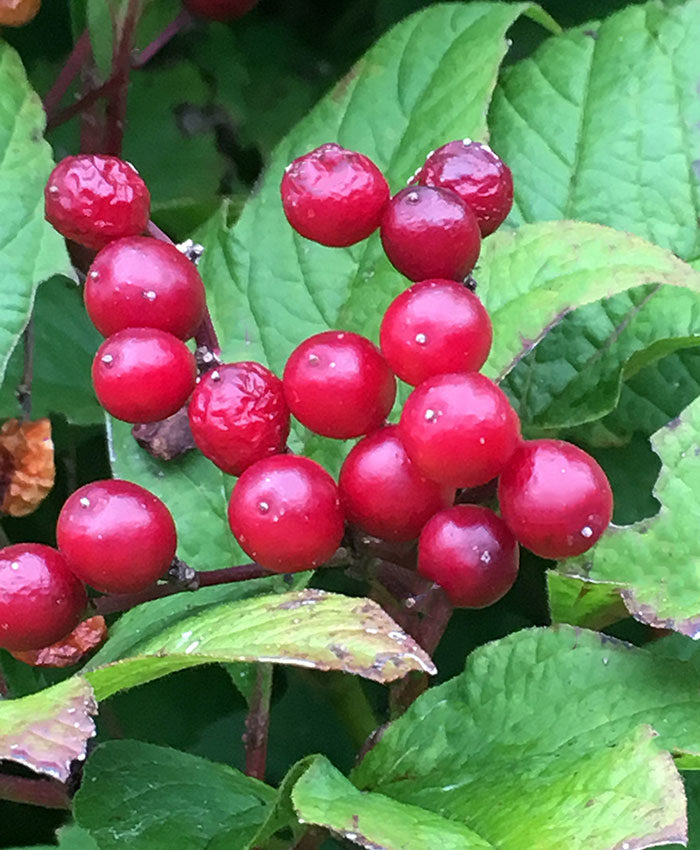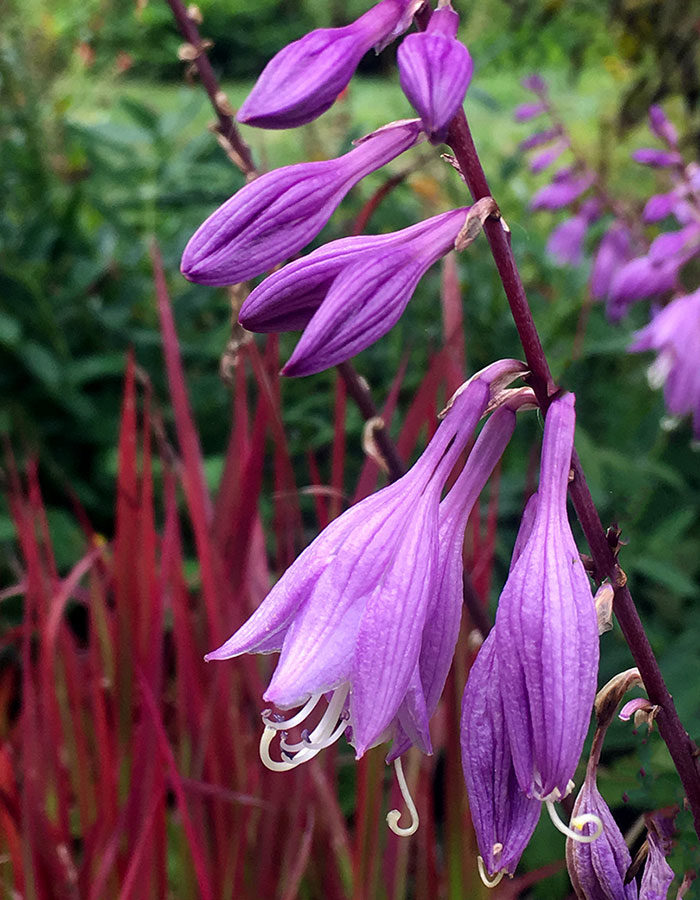
Gardens are all about engaging the senses: colors and shapes to catch the eye, rustling leaves and birdsong to please the ear, all kinds of plant textures to touch, and a wide range of fresh scents to tickle the nose. So why not please your palate as well? Fortunately, you can enjoy delightful flavors from your garden without planting a home orchard (or even going to the effort of adding traditional edibles to your borders) by learning about backyard foraging: discovering the edible properties of plants you already have growing in your landscape. You may be surprised to find out how many plants you can nibble on as you work or wander around in your yard.
You do need to be careful when you start snacking from plants not commonly grown as edibles. Make sure you have correctly identified what’s growing in your yard, and that you know the plants are free of pesticide residue. As with anything you eat, there’s always the chance you could be allergic to it, so be cautious, and start with very small quantities.
Tastes also vary widely, so what some people find unappetizing you may find very tasty, and vice versa. One of my own favorite foraging finds in my Pennsylvania garden is ‘Issai’ purple beautyberry (Callicarpa dichotoma ‘Issai’, Zones 5–8). The abundant, brilliant purple berries are tiny and, admittedly, seedy. Some describe them as bland or bitter, but I find that they have an interesting sweetness.

American cranberry bush (Viburnum trilobum, Zones 2–7) is another shrub I had in my garden for many years before I realized that the showy fruits are edible. With two different cultivars—‘Bailey Compact’ and Redwing® (‘J. N. Select’)—growing in the same area, I have plenty of berries to pick; in fact, I have way more than I’d ever eat. I’d say the taste is refreshingly tart.

You probably already know that daylily (Hemerocallis spp. and cvs., Zones 3–9) buds and flowers are fine to eat, and maybe you’ve tried sprinkling a few blooms of violets (Viola spp. and cvs., Zones 3–9) or nasturtium (Tropaeolum majus, annual) in a salad for color. But did you know that hosta (Hosta spp. and cvs., Zones 3–9) blooms are edible as well? I sampled the buds and flowers for the first time this summer and found them to have a nice crunch and light, pleasant flavor.
If you’re interested in learning more, I highly recommend getting a copy of Backyard Foraging: 65 Familiar Plants You Didn’t Know You Could Eat by Ellen Zachos. Ellen has extensive experience with foraging in our region, and with her guidance, you may discover you’re already growing many other interesting and tasty edibles in your Mid-Atlantic landscape.
Nancy J. Ondra is the author of over fifteen books, including Grasses, The Perennial Care Manual, and The Perennial Matchmaker.
Fine Gardening Recommended Products

The New Organic Grower, 3rd Edition: A Master's Manual of Tools and Techniques for the Home and Market Gardener, 30th Anniversary Edition
Fine Gardening receives a commission for items purchased through links on this site, including Amazon Associates and other affiliate advertising programs.

Corona High Performance Orchard Loppers
Fine Gardening receives a commission for items purchased through links on this site, including Amazon Associates and other affiliate advertising programs.

Ho-Mi Digger - Korean Triangle Blade
Fine Gardening receives a commission for items purchased through links on this site, including Amazon Associates and other affiliate advertising programs.



















Comments
Log in or create an account to post a comment.
Sign up Log in